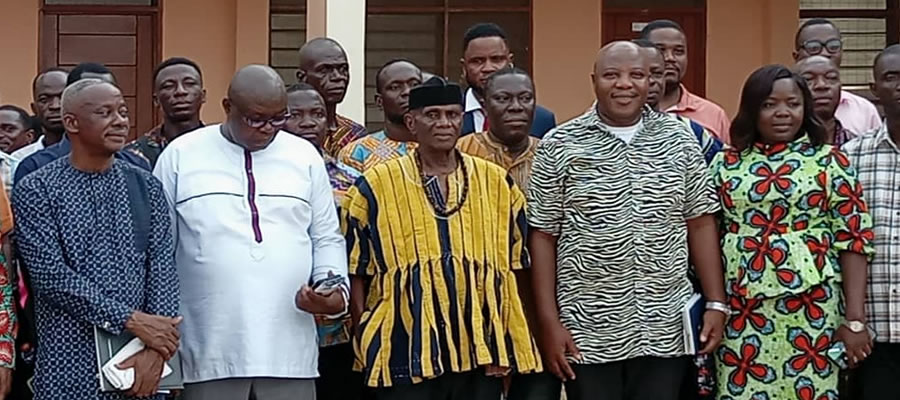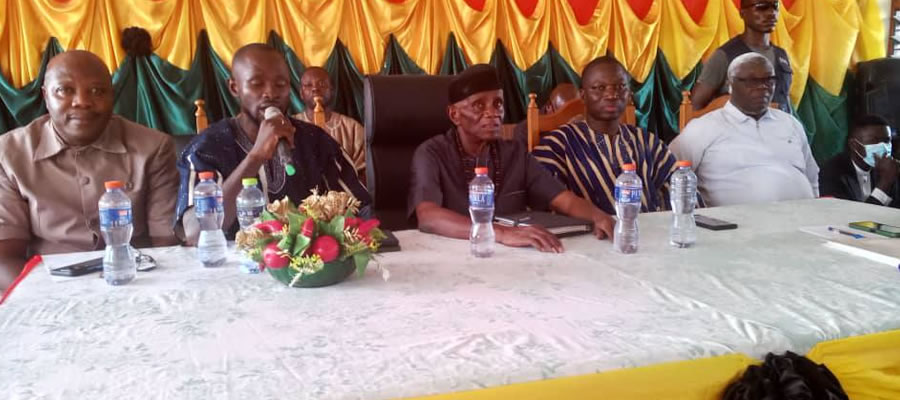

Physical and Natural Environment
The physical and natural environment is an essential element or factor for determining socio-economic development of the district. This stems from the fact that apart from it being a potential resource, it also serves as an ingredient within which all development activities take place. The factors that need critical analysis in the district under this segment include location and size, climate, vegetation, relief and drainage, soil, and geology and minerals.
Location and Size
The Nkwanta’North District, being one of the eighteen (18) districts in the Volta Region, is located between Latitude 7°30’N and 8°45’N and Longitude 0°10’W and 045’E. The district shares boundaries with the Nanumba South District to the North, Republic of Togo to the East, Kpandai District to the West, and Nkwanta District to the South. The District Capital, Kpassa is located 270km to the South of Ho (the Regional Capital). The District has a surface area of approximately 1,1510km2 thus making it one of the smallest districts in the Volta Region of Ghana.
The Nkwanta North District is remotely located in terms of proximity to large commercial centres such as Hohoe and Yendi. This makes prices of farm produce low but prices of manufactured goods remain high in the district. As a result, the district experience low household incomes especially among fanners who dominate the district’s population.
Free flow of information from the regional and national level is hampered by the long distances between the district capital and its regional and national capitals. Apparently, this situation results in high administrative cost for the District Assembly and other organizations, agencies operating in the district. Prospective investors who want to invest in the district are somehow reluctant due to the above-mentioned bottlenecks.
Besides, the district’s closeness to the Republic of Togo serves as a potential ground for greater international trade and positive socio-cultural exchanges between Ghana and Togo. Figure 3 shows the political map of the district1.
Climate
The Nkwanta North District forms part of the tropical climatic zone, which is characterised by double maxima of rainfall (i.e. between April and July; August and September). The area experiences two main seasons namely wet and dry seasons. The dry season is experienced between November and March.
Mean annual rainfall figures range from 922mm to 1,874mm. The mean annual temperature of the district is between 52°F (11°C) and 103°F (39°C). The area records high relative humidity figures ranging from about 80% during the wet season to 70% during the dry season.
The climate of the District is suitable for the growing of various crops. However, the influence of the long dry spell (harmattan) has damaging effects on the environment and farm outputs. The relatively heavy rains associated with this type of climate adversely affect all roads in the District, thus rendering them not motorable during the rainy season.
There is an on-going exercise by the Statistical Services of Ghana to separate the two districts (i.e. Nkwanta North and Nkwanta). When the exercise is completed, there will be an independent map for the district. In the meantime, the attached map indicates both Nkwanta North and Nkwanta districts. The information stated is still relevant to the district.
Vegetation
The District lies in the Transitional Vegetation Zone and covered by Sanannah Woodland and Grassland. Occasional pockets and remnants of semi-deciduous forest also exist. The forest vegetation is made up of many different tree species including wawa (Triplochiton selerexylon), mahogany (Khaya invorensis), esa (Celtis), ofram (Terminalia superba), edinam (Entandro phragma ivorensio), onyina (Ceiba petandra), kyenkyen (Antiaris Africana) and odum (Milicia exelsa).
Relief and Drainage
The district forms part of the country’s dissected plateau. The greater proportion of this plateau is between 100m and 200m above sea level. There are few valleys that do not exceed 150m above sea level.
The district is endowed with a number of rivers and streams, the most important of which is the Oti and Kpassa Rivers. The streams and rivers exhibit a dendritic pattern, which forms the Oti basin. The relief and drainage systems favour the development of fish farming, cultivation of valley bottom rice, sugarcane and dry season vegetables. Of these potentials, fish farming is practised on commercial basis at Damanko, Danladi and Kabonwule. Due to the relatively low level of relief in the district, road construction would be less expensive.
Geology and Minerals
The geology of the Nkwanta North District is a combination of Granitoid Undifferentiated and Phyllite, Schist, Tuff and Greywacke, which contains the mineral bearing rocks. There are also granite rocks and deposit of minerals such as phosphate, has been discovered in some parts of the district but not mined.
The presence of mineral deposits in the district has the potential to generate royalties as revenue to the District Assembly as well as create employment for the inhabitants. It also implies that there is going to be influx of people to the district if the mining operation takes off.
Soil
The soil in the district is mainly of the ferric acrisols and dystric fluvisols type. The ferric acrisols type of soil covers about 70% of the entire soil in the District, which supports the cultivation of a wide variety of crops including root crops, cereals, legumes, and ojl palm. It also makes the district to have a comparative advantage in agriculture and agro-processing.
Deforestation, mining and quarrying, bushfires, soil erosion and natural disasters are some of the key factors that negatively impact on the natural environmental conditions in the district.
Date Created : 11/21/2017 3:09:17 AM









 facebook
facebook
 twitter
twitter
 Youtube
Youtube
 +233 593 831 280
+233 593 831 280 0800 430 430
0800 430 430 GPS: GE-231-4383
GPS: GE-231-4383 info@ghanadistricts.com
info@ghanadistricts.com Box GP1044, Accra, Ghana
Box GP1044, Accra, Ghana